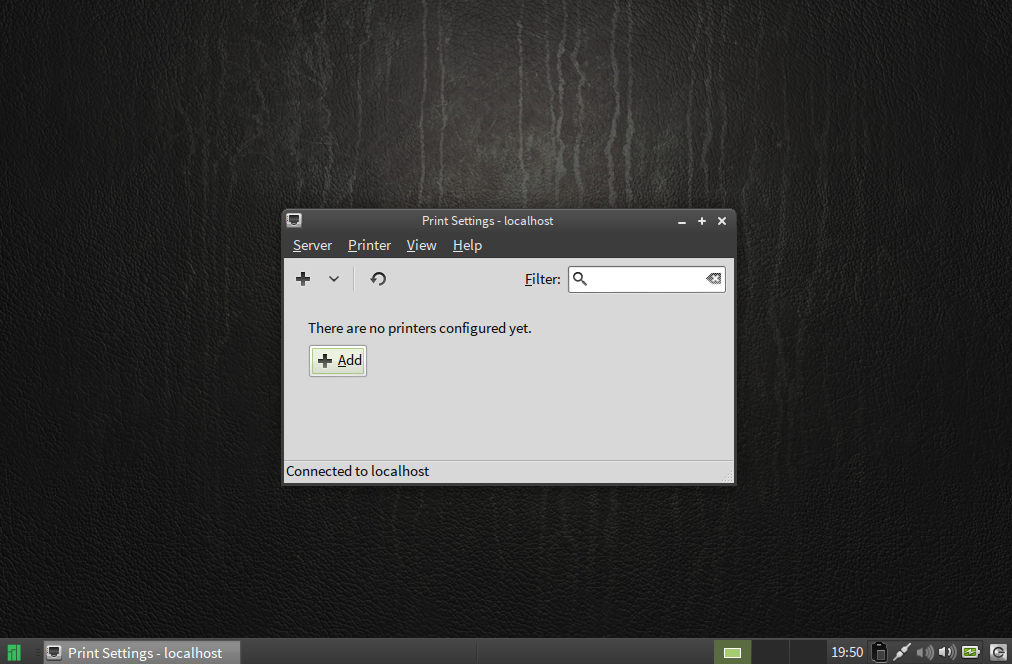Difference between revisions of "Printing"
Views
Actions
Namespaces
Variants
Tools
imported>Verityproductions (Created page with "= Overview = {{note| All the necessary printer software will be pre-installed in the full version of Manjaro. However, if installing the NET-Edition, a guide on installing CU...") |
(No difference)
|
Revision as of 18:45, 14 October 2012
Overview
If you find that you are unable to print, then it may be necessary to enable CUPS (previously an acronym for Common Unix Printing System). This is a popular open source printing system used in most Linux distributions due to its ease of use. As stated by Wikipedia:
'CUPS consists of a print spooler and scheduler, a filter system that converts the print data to a format that the printer will understand, and a backend system that sends this data to the print device. CUPS uses the Internet Printing Protocol (IPP) as the basis for managing print jobs and queues. '
Enabling CUPS
To permanently enable CUPS, open your terminal and input the command:
sudo systemctl enable cups.service
Once enabled, to start using CUPS immediately without rebooting, input the command:
sudo sudo systemctl start cups.service
Otherwise, to temporarily enable CUPS for a single session, input the command:
sudo cupsd
In either instance, CUPS will be immediately enabled and ready.
Using CUPS to Configure Your Printer(s)
Don't worry - there's no need to use the terminal here! In fact, assuming CUPS has been enabled, upon connecting a printer, it should be automatically detected and configured for you to use. The process itself should take only about a minute. However, if the automatic detection and configuration doesn't seem to work, then your printer can be manually set up with relative ease.
Part 1: The Automatic Method
1. Add your printer. Ensuring that your printer is properly connected and switched on, select Print Settings from your desktop menu. Once the Print Settings window has opened, click + add to add a new printer.
2. Select your printer name. Once the New Printer window has opened, under the Select Device heading, find the name of your printer and click to highlight it. If your printer is listed more than once, check the description on the right to ensure your selection is not for another function, such as scanning or faxing.
3. Select your printer connection. Under the Connection heading, click to highlight your printer's connection method. As illustrated, this will usually always be 'USB'.
4. Install your printer driver. Once your printer name and connection have been highlighted, click the Forward button and CUPS will automatically search for the available drivers for it. In most instances, once the appropriate driver has been found it will be automatically installed, and the set-up process will have completed.
Otherwise, if the process did not succeed, it will be necessary to click the forward button again in order chose the appropriate driver yourself.
Part 2: The Manual Method
Select your printer make. If the Automatic method did not automatically find and install an appropriate driver for your printer, then clicking the forward button again will present the Chose Driver window. The first step is to select the make of your printer. As illustrated, as an HP printer is to be installed, the recommended choice of HP has been highlighted by clicking on it.
Once your make of printer has been highlighted, click the forward button to proceed to the next step.
Select your printer model. Under the left-heading models, select the specific model of your printer. As illustrated, as the printer model to be installed in this instance is a Model 2210, the recommended choice of PSC 2210 has been highlighted by clicking on it.
Select your printer driver. At last! Under the right-heading Drivers, select the appropriate driver for your printer. As illustrated, the recommended printer driver has been clicked to highlight it. It is advised that you also select whatever driver is recommended for you.
Once your printer model and driver has been highlighted, click the forward button to proceed to the next step.
Choose your printer name, description (optional), and location (optional). Unless you want to change anything, it is not necessary to do anything here.
If you are happy with the information provided - or have made the desired changes - click the Apply button to complete the process.
Configure your printer. Having clicked the Apply button in the previous step, your printer's properties will be displayed. By selecting the categories on the right-hand side, you can view information and amend your printer's settings if you wish. The standard settings will be fine for most people, so unless you have something specific in mind, there will be nothing you need to do.
Test your printer. Although optional, this step is highly recommended! Click the Print Test Page button to ensure that your printer is set up and working properly.
That's it. Now click the OK button to close the window and start using your printer.
Disabling CUPS
If for any reason you wish to disable CUPS (e.g. in order to use an alternative printing system
sudo systemctl disable cups.service
